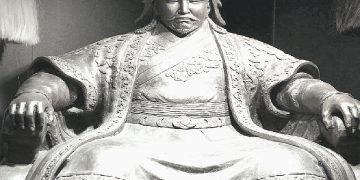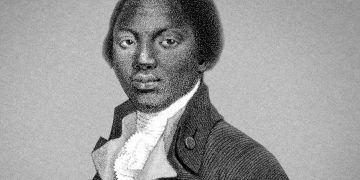Vedic sources
Dating
Period of the end of II – first third of the 1st millennium BC usually referred to as Vedic, since the main sources for its study are the oldest monuments of Indian religious literature – the Vedas. The very word “veda”, akin to the Russian “vedat”, means sacred knowledge. The concept of “Veda” usually includes four main collections – samhita
- Rig Veda,
- Yajurveda,
- Samaveda,
- Atharvaveda;
as well as the so-called late Vedic works adjoining them.
Samhitas contain hymns, chants, sacrificial formulas and incantations. The earliest of these is the Rig Veda (Veda of Hymns). Judging by the geographical names mentioned in it, the Rig Veda was created by the Aryan tribes already on the territory of North-West India and, possibly, Afghanistan. There are almost no indications of the more eastern and southern regions in the Rig Veda – the Vindhya mountains are not mentioned at all, and the rivers Ganges and Yamuna are rarely mentioned and only in the latest hymns. Based on the conclusions of comparative linguistics (in particular, from comparisons of Vedic monuments with the Avesta and Aryan vocabulary in texts from Asia Minor), as well as from archaeological materials, the appearance of the Aryans in India cannot be attributed to a time earlier than the middle of the 2nd millennium BC. … At the same time, the place of the Vedas in the history of Indian culture is as follows, that their final design cannot be attributed to the time later than the first third of the 1st millennium BC. Apparently, the main part of the hymns of the Rig Veda should be dated to the end of the 2nd millennium BC. and to attribute the compilation of a single collection to the turn of the II-I millennium BC. The creation of other samhitas occurred, obviously, somewhat later, which does not exclude the deep antiquity of the materials included in them – individual motives or even whole texts.
Rigveda
The Rig Veda contains 1028 hymns of various sizes (from 1 to 58 verses), the total number of verses is 10642. Ancient editors divided it into 10 cycles – mandalas. Mandalas from II to VII tradition are attributed to individual rishis (sages, founders of priestly families, such as Vishwamitra, Atri, Bharadwaja, Vasishtha, etc.). This tradition finds support in the hymns themselves, in the text of which the names of these rishis are sometimes played up with combinations of sounds. Family mandalas are usually considered the oldest part of the Rig Veda. The IX mandala contains only hymns addressed to the god (as well as the sacred drink) Soma. They are arranged according to formal characteristics – depending on the poetic size and in the order of decreasing number of verses in the hymns. This mandala probably represents a relatively late collection of hymns, although the Soma hymns themselves may be quite ancient. Allocation Principles I, VIII and X mandalas are unclear. Mandala X in language and content is the latest part of the Rig Veda and is a motley conglomerate of texts added to the already completed collection.
Samaveda
Samaveda in its content is devoid of independent meaning, since only 75 “tunes” of it (saman) are not a repetition of the hymns of the Rig Veda. Yajurveda (“Veda of sacrificial formulas”) has been preserved in five editions, of which four (Kathaka, Kapishthala-Katha, Taittiriya and Maitrayani) are called Black Yajurveda, and the fifth – Vajasaneya-samhita – White. The White Yajur Veda consists of two thousand “formulas” (Yajus), largely borrowed from the Rig Veda and Atharva Veda and arranged in accordance with the order of their reading when performing the ritual. Black Yajurveda, in addition to poetic formulas, contains explanations of ritual compiled in prose, and in this respect, Brahmanas are close to late Vedic literature.
Atharvaveda
From the point of view of content, along with the Rig Veda, the Atharva Veda is the most interesting. It has been preserved in two editions –
- Shaunakia. Shaunakiya (or Vulgate) consists of 20 books (kanda), including 731 spells with a total volume of about 6 thousand verses. About 1/6 of its text is not poetry, but rhythmized prose (book XV in its entirety, most of XVI and some others). About 1/7 of the Atharva Veda coincides with the Rig Veda, and hymns are mainly borrowed from the X, as well as the I and VIII mandalas (incantation hymns that stand apart in the Rig Veda itself). In the I-XII books of the Atharva Veda, the texts are united according to a formal basis (by the number of verses), and in the XIII-XVIII books – thematically (in XIV – wedding, in XVIII – funeral, etc.). Old commentaries often ignored books XX or XIX and XX, which may not have belonged to the original collection. Of the 143 spells of XX book, 128 are borrowed from the Rig Veda.
- Payppalada – the second edition of the Atharvaveda (also called Kashmir) is often significantly different from the Vulgate; it consists of 6500 verses, and about 1/8 of it is completely original.
Differences between the Rig Veda and the Atharva Veda
Most of the texts of the Rig Veda and Atharva Veda are associated with the performance of certain sacrificial rituals. However, some of the hymns and incantations, although they were used in ritual activities, were not composed precisely for this purpose. They are very diverse in content. The hymns of the Rig Veda are usually addressed to one or another deity and contain his praise, as well as a request (the latter is not always expressed directly, but sometimes it is implied in those epithets with which the deity is endowed). There are also cosmogonic hymns, conspiracy hymns and spells, mystery hymns.
The Atharva Veda consists mainly of spells, but ordinary hymns similar or coinciding with the Rig Veda are not uncommon in it. These are conspiracies against evil spirits and diseases, prayers for a long life, gaining children, power or wealth. The religion of the Atharva Veda reveals a number of features that make it possible to speak of a relatively late design of the monument (veneration of abstract deities, such as Skambha-Opora, Kala-Vremya, etc.). The mentions of rice and tiger skin indicate that by the time of the creation of the Atharva Veda, the Aryans had already significantly advanced south and east of the Punjab.
However, the main difference between the Rig Veda and the Atharva Veda does not lie in the field of chronology. They cover two different aspects of the Vedic religion. The Rig Veda is a monument of high priestly poetry associated with great sacrifices (shrauta), in particular with the libation of soma. It is believed that it was based on the texts read during the celebration of the beginning of a new calendar cycle – the New Year. Atharva Veda is more focused not on large sacrifices of a social nature, but on a domestic, unofficial ritual (grhya), it contains texts created not only in the priestly (brahmana) environment. Perhaps it was this more “popular” character of the Atharva Veda that for a long time prevented her from being counted among the “trinity of sacred knowledge”, “three Vedas” (trai). If non-Aryan elements are revealed even in the language and mythology of the Rig Veda,
Vedic language
An important historical source is the Vedic language itself, since its study helps to establish the territory of the initial settlement of the Aryans and the possible path of their advance to India. Vedic vocabulary, epithets, requests to the gods and praises of gifts contained in hymns, the general nature of the Vedic religion make it possible to get an idea of the economy, social and political system of the tribes that created them. In this case, however, it is necessary to take into account the well-known traditionality of descriptions and the archaization of relations that follows from this. Several hymns of the Rig Veda contain historical legends, for example, about the glorious battle of the leader of the Bharat tribe, King Sudas, with the Kuru tribes and their allies.
Of course, the primary source is the Vedas for the history of religion, mythology and the culture of the Indo-Aryans in general. Since every event of everyday life in ancient times was accompanied by special magical rites and the recitation of appropriate spells, the Atharva Veda contains extensive material about the life, customs and beliefs of Indians.
The hymns of the Rig Veda are poetic texts created in a special, sacred language during illumination, apparently associated with ecstatic practice. They cause a series of pictures, connected not so much by logical as by associative links. Their texts are full of metaphors, symbols, allusions to something well known to performers and listeners. Vedic studies have long been one of the special and detailed branches of Indology, but the interpretation of Samhit still presents many complex problems. When analyzing the Vedas, researchers proceed from both comparative material (and above all the closest one – the Avesta) and from medieval commentaries, the most significant of which is written by Sayana in the XIV century.
Late media literature
The composition of late Vedic literature includes monuments of the so-called “brahminical prose” – brahmanas, aranyaks, Upanishads .
The Brahmans as a whole are somewhat later than the Samhit and can be conditionally dated to the first third of the 1st millennium BC. They were created in North India on the territory between the Sutlej and the upper reaches of the Ganges. Around the VI century. BC. the earliest Upanishads also belong, starting with Brihadaranyaka and Chandogya, although works of this genre continued to be composed many centuries later.
Brahmanas
The Brahmans are mainly devoted to the interpretation of the symbolism of the sacrificial ritual and the explanation of the connection between the ritual action and the text of the sacrificial formulas (mantras). The brahmanas are dominated by the idea of the animality of all things, of universal interconnection, due to which a magical effect on the Cosmos is possible through special ceremonies and sacred words pronounced during the sacrifice. Knowledge of their innermost essence is the prerogative of the priests – brahmanas, who thus acquire power over the world, over people and gods. The compilers of these late Vedic texts give a central place to identifications of phenomena and concepts of various levels: abstract and concrete, natural and social, divine and human. Such comparisons can be based on –
- magic of numbers (for example, the coincidence of the number of parts or syllables in words denoting different objects),
- the proximity of the sound of words (the so-called “folk etymology”, usually having nothing to do with the actual origin of the vocabulary),
- myth (sometimes genuine, but more often – invented specifically for this case).
Brahmans also contain retellings of ancient legendary and mythological legends, partially revealing the dull hints of Vedic hymns: for example, about the Flood, about King Pururavas and the heavenly maiden (apsara) Urvasi, about how his father intended to sacrifice Shunakhshepa, and many others. In the religion of the late Vedic period, there is a further development of those features that are already noticeable in the Atharva Veda. In particular, deified general concepts (like Speech and Faith) and mainly the Creator – Prajapati, identified with the cosmic principle – Brahman, are brought to the fore . The latter also acts as a specific mythological character – the god Brahma.
Aranyaks and Upanishads
The aranyakas (“forest books”) are similar to the brahmanas, but they contain even more speculative reasoning. The culmination of this genre of Vedic literature is the Upanishads, which are often called in the Indian tradition the word Vedanta, i.e. “The end of the Veda.” The emergence of the Upanishads is associated with the practice of teaching esoteric doctrines in the abodes of forest hermits. At the same time, there is no doubt that these texts continue the tradition of speculative interpretation of the ritual in Brahminical prose.
The meaning of Vedic literature
The works that make up the late Vedic literature were formed in the circles of the priests – the Brahmins, and often in the quotations from the Samhitas themselves they reveal belonging to one or another “school” of the ritual. According to the traditional classification of Vedic texts,
- the Rig Veda is adjoined by two brahmanas – Aytareya and Kaushitaki – along with complementary aranyaks and Upanishads.
- Several brahmanas belong to Samaveda (Panchavimsa, Jaiminiya, etc.). The most extensive brahmana (five volumes in English translation) belongs to the White Yajurveda. This is the Shatapatha Brahmana (Brahman of the Hundred Paths), preserved in two editions, Kanva and Madhyandina. Its final chapters are composed of the oldest of the Upanishads – Brihadaranyaka.
- Only the Gopatha Brahmana is ranked as Atharva Veda, the text is very late and has little to do with samhita.
Late media literature is interesting mainly from the point of view of religion and culture, since, on the one hand, it allows one to study the features of an archaic worldview on a huge amount of material, and on the other, it contains the foundations of the most important religious and philosophical concepts of ancient India. The information of late Vedic texts about the economy, social and political structure of India is fragmentary and in most cases extremely laconic. Due to the fact that her works are devoted to ritual or speculative constructions, they cannot fully and evenly reflect all aspects of society.
The colossal volume of vocabulary of Vedic texts allows us to outline in general terms the various aspects of material culture and everyday life. The most important social and political institutions are reflected in a peculiar system of concepts. Finally, the question of the purpose of creating these monuments seems to be especially important. Solving the problem of the reasons for their appearance, their social significance should contribute to understanding the essence of the era that gave birth to them.
Mahabharata and Ramayana
Along with the late Vedic literature, the sources for this period are the works called in the Indian tradition itihasa (“past”) and purana (“ancient”). The Mahabharata and Ramayana belonging to this genre are usually called epic poems, although their form and content have certain differences from the epic of other peoples.
Composition of poems and variations
The Mahabharata consists of about 100 thousand couplets-slokas (in the critical edition there are slightly fewer – about 78 thousand) and is divided into 18 books of different sizes. Sometimes the poem Harivamsa (“Genealogy of Hari”, ie Vishnu) is considered as her nineteenth extensive book. The main plot of the Mahabharata is the deprivation of the power of the descendants of King Pandu (Pandavas) by their cousins from the Kuru clan, the Kauravas, and the return of the kingdom after a bloody fratricidal battle on the Kuru (Kurukshetra) field. However, no more than half of the text is devoted to the presentation of the main plot itself. The Mahabharata is replete with inserted episodes of both narrative and poetic-didactic nature. Often these episodes are completely independent works inserted into the poem by means of various “frame” constructions. Some of them contain myths ancient legends and traditions. The didactic parts are philosophical treatises in verse (for example, the famous Bhagavad Gita) or instructions.
The Ramayana is almost four times shorter than the Mahabharata and is a more complete work, containing fewer digressions, insertions and didactics. Its text is almost entirely devoted to the presentation of the main plot – the abduction of Sita, the wife of Prince Rama, by the demon Ravana and her subsequent return. The Ramayana is traditionally considered the “first poem” (kavya), and indeed its style is often close to classical Indian poetry.
The Mahabharata came down in hundreds of manuscripts (mainly of the late Middle Ages – XV-XVIII centuries), transmitting dozens of versions of the poem, significantly differing from each other in volume, content, sequence of presentation and reading options. It is customary to distinguish two main groups of versions –
- northern (which, in turn, is subdivided into north-western and central) and
- southern, represented by manuscripts in Malayalam, Telugu and Grantha.
There are also numerous versions of the Ramayana, divided into three groups, of which only two – Bengali and West Indian – can be identified geographically. As for any monument of oral creativity, for the Mahabharata and Ramayana it is fundamentally impossible to establish a “true”, “author’s” or “original” text. Recordings go back to different storytellers, and execution was a creative process in which variations in presentation are inevitable (variations, however, according to certain rules and with the help of more or less stable, “formulaic” turns).
Dating
In this regard, it is impossible to determine the date of compilation of each poem, but it is legitimate to speak only about the broad chronological limits of its design and recording. References to individual episodes of poems or their names are found in the monuments of Indian literature from about the middle of the 1st millennium BC. The oldest list of books of the Mahabharata dates back to the beginning of our era. It was already recorded, but not yet in the form in which it came down to us. Some details (for example, the mention of the Huns) indicate that the text available to us could have been recorded no earlier than the middle of the 1st millennium AD. From the Gupta era, numerous images of heroes and plots of the epic appear. In general, the time of the design of both poems is conventionally determined within the boundaries of the middle of the 1st millennium BC. – the middle of the 1st millennium AD The relative chronology of the poems is unclear. It is usually considered
Separate books of the Mahabharata and Ramayana should be dated to different times. Of the seven books of the Ramayana, for example, the first and last are considered the most recent. Some episodes within the books represent independent works that existed long before the creation of the poem as a whole, and some plots of myths and legends can go back to the deepest antiquity, moreover, not only Aryan (or Indo-European), but also local (pre-Aryan).
The main content of the poems and late strata
Mahabharata and Ramayana are multi-layered, not only in the aspect of “pure” chronology. In terms of content and form, they are a conglomerate of different elements: archaic myths and military legends, legends and parables, treatises and fables, extensive lists of names of gods, peoples, cities, genealogies, places of pilgrimage, etc. They not only belong to different times and different peoples of India, but were also created in different social environments. Initially, heroic-epic poetry was associated with the military aristocracy – the Kshatriyas, it developed in parallel with the priestly, Vedic literature. However, the vaults that have come down to us undoubtedly reflect the later, Brahminical edition of the epic.
Как во всяком эпическом произведении, отражение действительности в Махабхарате и Рамаяне весьма сложное, и следует постоянно учитывать то, что история в них тесно сплетается с мифом. Ядро эпического повествования, видимо, относится к рубежу II-I тыс. до н.э. Сказания Махабхараты часто отражают социальную и политическую обстановку, очень близкую той, которую можно восстановить по ведийским источникам. В ведийской литературе упоминаются и некоторые из персонажей эпоса, которые могли иметь исторические или полуисторические прототипы (Джанамеджая, Парикшит). Однако материальная культура и Махабхараты и Рамаяны (цветущие города, пышные дворцы) должна быть отнесена к концу I тыс. до н.э. — началу н.э. Махабхарата изобилует анахронизмами (например, упоминания о Риме, Антиохии и «городе греков» — Александрии, якобы покоренных Пандавами, должны относиться к первым векам н.э.). В области духовной культуры происходит такое же смешение разных напластований, и если на политической карте Махабхараты племена «героического века» Куру и Панчала соседствуют с греками и гуннами, то в религиозной ее картине культы ведийских богов уживаются с индуистской триадой, Скандой и Дургой.
In historiography, an unjustifiably large place is occupied by the problem of the historicity of the main plot of the Mahabharata, the battle between the Pandavas and Kauravas in Kurukshetra. Since in Vedic literature there are references to epic heroes and the Kuru field, but there is no information about the great battle on this field, it can be assumed that, in any case, it did not have either the scale or the significance attached to it by the epic. Epic poems are important primarily as a collection of monuments of ancient oral literature (and of different tribes and peoples of India), as a reproduction of predominantly Kshatriya military legends that illuminate Indian society, state, culture and religion differently from Vedic (Brahman) sources.
Puranas
In many respects, the so-called Puranas are similar to the Mahabharata and Ramayana. The Indian tradition itself recognizes this similarity, sometimes classifying epic poems (primarily the Mahabharata) as Puranas. The Puranas are also extensive works that include very diverse material and have become the sacred books of Hinduism. Usually called eighteen large Puranas (of which the most important are Vishnu, Vayu, Matsya, Bhagavata, Agni) and several dozen small (upapuran). Some Puranas are Vishnu, others are Saiva. Their design took place mainly in the 1st millennium AD, but some parts of the Puranas may go beyond this chronological framework and refer to both the last centuries BC and the first half of the 2nd millennium AD. According to the Indian tradition itself, the core of the Puranas is
- cosmogony,
- theogony and
- genealogy of kings.
Much of the mythology of the Puranas is of non-Aryan origin.
Of particular interest are the numerous references to tribal names and genealogies of rulers whose origins date back to epic heroes or mythological characters. In these legends about antiquity, information about the tribes and peoples of the “heroic age”, roughly coinciding with the Vedic period, has been preserved. However, the Puranic genealogies cannot be regarded as a reliable source. Too often they were distorted by the court panegyrists to please their royal patrons from local dynasties of much later time.












